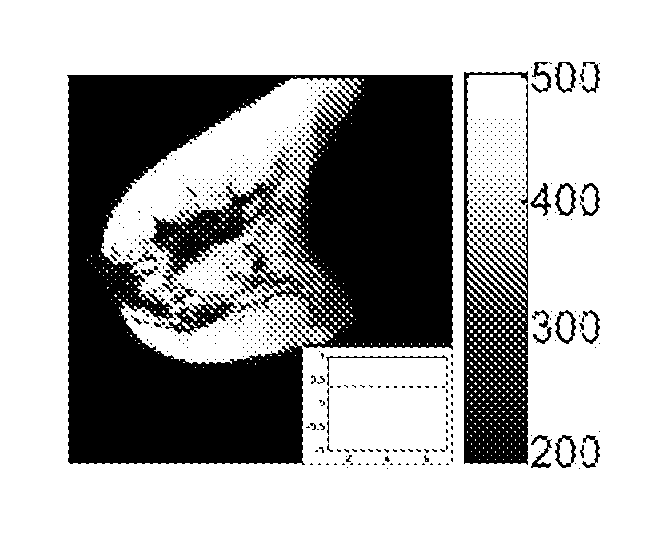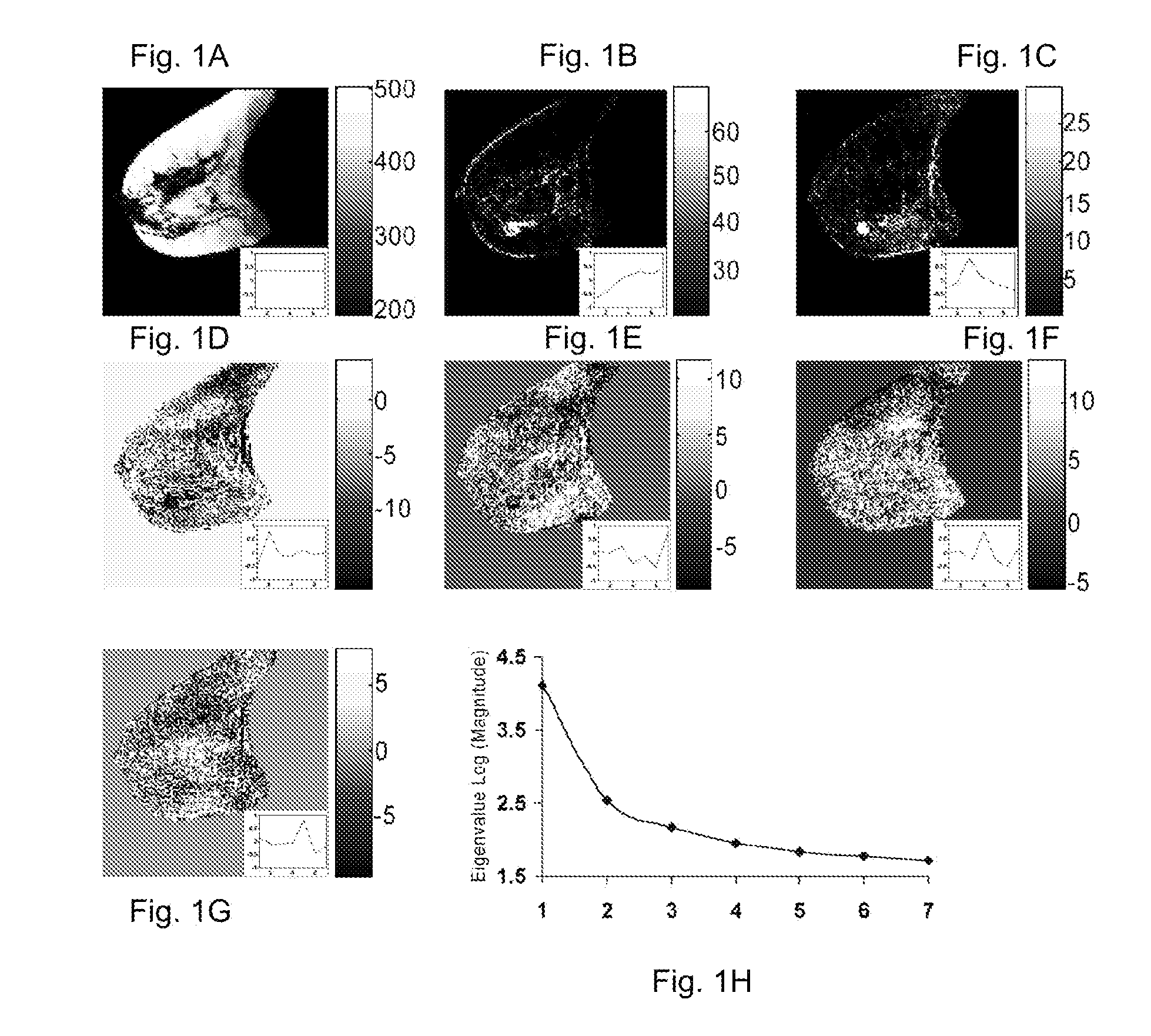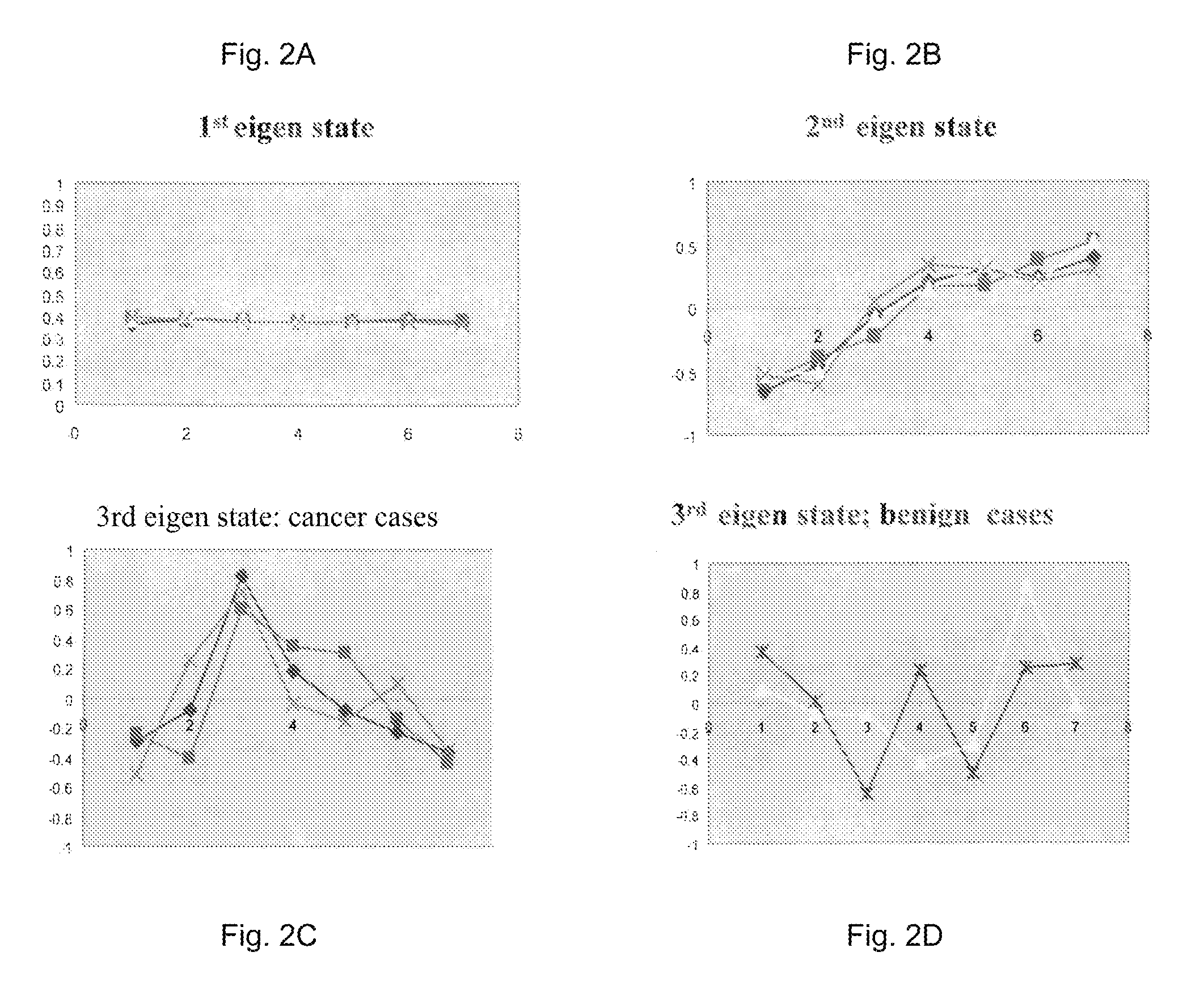Method and apparatus for computer-aided diagnosis of cancer and product
a computer-aided diagnosis and cancer technology, applied in the field of breast cancer diagnosis, can solve the problems of difficult to accurately correlate the parameters with the underlying tumor physiology, inaccurate estimation of these parameters, and inability to accurately correlate parameters, etc., to achieve improved diagnostic capacity for differentiation, high accuracy, and fast
- Summary
- Abstract
- Description
- Claims
- Application Information
AI Technical Summary
Benefits of technology
Problems solved by technology
Method used
Image
Examples
Embodiment Construction
[0038]The goal of this invention is a method and apparatus that operates as a hybrid method with a developed and integrated mathematical, model-free analysis and a kinetic model based analysis of dynamic contrast-enhanced magnetic resonance imaging (DCE-MRI) of tissue, particularly breast, although the invention can be used with other tissue, such as lung, prostate, brain, ovary etc.
[0039]In one application of the invention, MRI of the breast has been performed in 5 patients 3 with breast cancer and 2 with benign breast disease using 1.5 Tesla scanner equipped with a dedicated breast coil. Seven sets of 3 dimensional dynamic contrast enhanced images were recorded at high spatial resolution, using gadopentetate dimeglumine as a contrast agent. Each such set underwent principal component analysis (PCA) and analysis by the three time point (3TP) software (see disclosure material of U.S. Pat. Nos. 6,353,803, 6,553,327, 6,611,778 and 7,110,903 all of which is here incorporated by referen...
PUM
 Login to View More
Login to View More Abstract
Description
Claims
Application Information
 Login to View More
Login to View More - R&D
- Intellectual Property
- Life Sciences
- Materials
- Tech Scout
- Unparalleled Data Quality
- Higher Quality Content
- 60% Fewer Hallucinations
Browse by: Latest US Patents, China's latest patents, Technical Efficacy Thesaurus, Application Domain, Technology Topic, Popular Technical Reports.
© 2025 PatSnap. All rights reserved.Legal|Privacy policy|Modern Slavery Act Transparency Statement|Sitemap|About US| Contact US: help@patsnap.com



